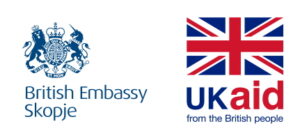Mladen Obrenović
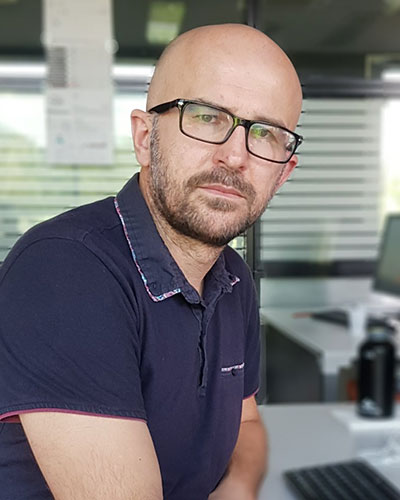 Since monuments in Bosnia and Herzegovina, and there is but a mere handful of them dedicated to all victims regardless of nationality and/or religion, mark the territory and represent three viewpoints of the recent past - Bosniak, Croat and Serb – murals should at least stand for something else. Unfortunately, they don’t - especially those dedicated to Mladic and Praljak.
Since monuments in Bosnia and Herzegovina, and there is but a mere handful of them dedicated to all victims regardless of nationality and/or religion, mark the territory and represent three viewpoints of the recent past - Bosniak, Croat and Serb – murals should at least stand for something else. Unfortunately, they don’t - especially those dedicated to Mladic and Praljak.
"Some are drawing the likes of Davorin Popovic, while others are drawing the likes of Ratko Mladic," Bosnia and Herzegovina actor Alban Ukaj said in a recent interview with Al Jazeera Balkans. When answering the question about dealing with the past, he spoke about how memorial plaques to war criminals and murals are (also) being erected in Bosnia and Herzegovina today, and stated that "the current state resembles some sort of a mental apartheid. People live with an unnerving feeling that someone might start shooting tomorrow”, which, according to him, is" worse than war ".
"If we don't talk about the victims and the crimes, and we haven’t in the way we should, they will reoccur," Ukaj believes. "It is happening to us now, a war rhetoric is upon us once more, which tells me that we haven’t been loud enough for generations and that we have not talked enough about crimes on all sides."
Judging by the number of murals in Bosnia and Herzegovina, more precisely the Republika Srpska entity, dedicated to Mladic - sentenced to life in prison in The Hague for genocide in Srebrenica, persecution of Bosniaks and Croats, terrorizing Sarajevo citizens and taking members of UNPROFOR as hostages - it is obvious that there has not been enough clear and loud talk, nor has there been a confrontation with the past. There are several B&H cities and municipalities where the mural is honoured - Gradiška, Foča, Kalinovik, Nevesinje, Gacko… In none of these places do they see any issue with a mural predominantly showing Mladic, most often wearing a military uniform, portraying an appropriate message, mostly a message of gratitude to his mother.
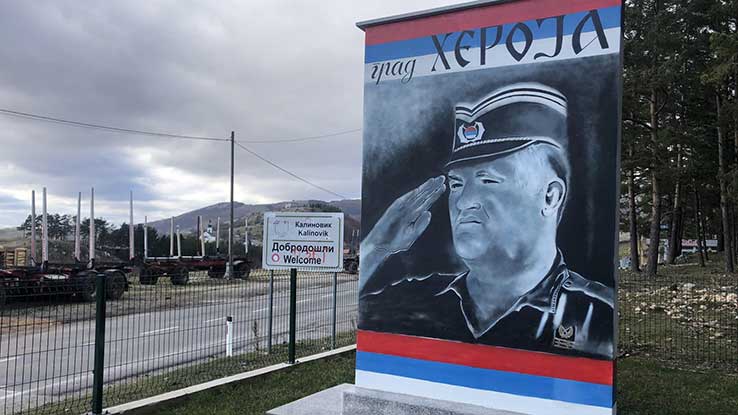 Source: birn.eu.com
Source: birn.eu.com
The City Administration of Gradiška believes that it has nothing to do with the mural that was painted on a residential building, because the approval was given by the apartment owners without the obligation to first obtain consent from the city. On the other hand, the city authorities don’t even have an established route to ask for the mural to be removed. Also, no one has started such an initiative, said the Balkan Research Network of Bosnia and Herzegovina (BIRN BiH). In Kalinovik, the seat of the municipality in which Mladic was born (the village of Bozanovici, where he was born, has a street in his honour), the mural is also not in their jurisdiction, because it is not on their property nor have they given permission for it, so they have no need, reason or obligation to remove it.
Journalists from Radio Free Europe also contacted other mayors of municipalities where there are such disputed murals, but were told that they had not received an official position, which means that they are waiting for a decision "from higher instances" (regardless of what that instance may be - Office of the High Representative, state or entity government) and that Mladic's mural remains on the wall.
High Representative: Unacceptable glorification of war criminals
The initiative to remove Mladic's murals, as well as other content glorifying convicted war criminals, was made just before Valentin Inzko, the then high representative of the international community, left Bosnia and Herzegovina. It coincided with his imposition of amendments to the Criminal Code sanctioning genocide denial or approving and justifying war crimes.
"The situation is so bizarre that we can make a 'tourist' map of Bosnia and Herzegovina's top cities with murals of war criminals," Inzko wrote in a letter to the people of B&H. "Numerous streets, both big and small, and squares in Republika Srpska are named after convicted war criminals, but also after those who managed to escape the hand of justice."
He also warned that in the Republika Srpska entity "we are witnessing the veneration and glorification of architects of crimes, convicted war criminals, denial of the Srebrenica genocide, relativization of historical facts", noting that "all of this is increasing day by day". "The glorification of war criminals is unacceptable in the civilized world and there should be consequences," Inzko wrote, calling for the removal of the mural. No one listened to him. Or almost no one.
The mural that appalled Inzko the most is the one in Foča, a town where numerous crimes against Bosniak civilians were committed in the first half of the 1990s and the residents were banished. Mladic's face was on the 25-meter-long Serbian tricolor, but representatives of Bosniak returnee associations confirmed that the mural had been repainted overnight. However, a mural dedicated to Draza Mihailovic, a Chetnik leader from World War II, remained.
"The aim of the mural was to insult the returnees and instil fear in them," Midheta Kaloper-Oruli, Secretary General of the “Foča 92-95” Association of War Victims, told BIRN BiH. Inzko made a similar point in his message to the public.
"If they remove one [mural], another one will appear. If they can be removed overnight, they can also be painted overnight", replied Srdjan Stanković, the president of the Veterans' Organization of the Republika Srpska, to whom the murals are -"sacred".
“A war criminal to some, yet not to others'
"Slobodan Praljak is not a war criminal. With disdain, I reject your verdict", were the last words of the former Commander of the General Staff of the Croatian Defence Council before, on the last day of November 2017, he drank poison in the Hague courtroom and committed suicide. Together with five other military and political leaders of B&H Croats and the self-proclaimed Croatian Republic of Herzeg-Bosna, Praljak was previously sentenced to 20 years in prison for crimes committed in the first half of the 1990s. Those words of Praljak are written on murals in his honour, painted all over Herzegovina - in Mostar, Čapljina, Široki Brijeg, Čitluk…
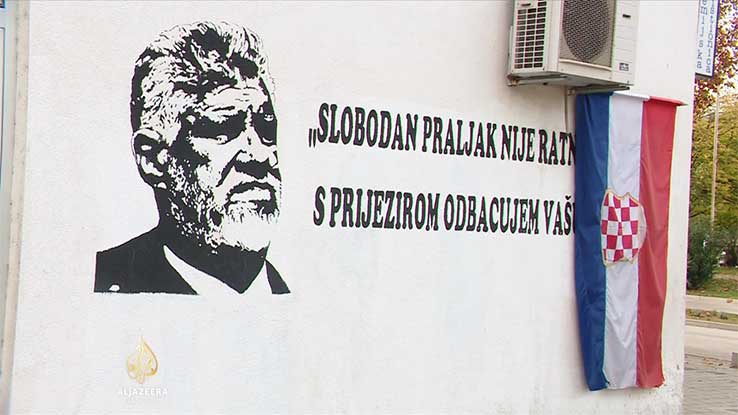 Source: balkans.aljazeera.net
Source: balkans.aljazeera.net
"For some he is a war criminal, for others he is not," a resident of Čapljina told Al Jazeera Balkans. "I think that people who are interested in that are dealing with unnecessary things. It’s better to get some work done than to look at murals, "added another.
An initiative was also launched to remove Praljak's mural, specifically in Čapljina, but without any reaction of the cantonal and city authorities. While the cantonal SDP representative Ismet Lulić warns that the installation of the mural "denies the court verdict and violates the Criminal Code of Bosnia and Herzegovina", and announces a report against the mayor, the Čapljina City Council also believes that this problem should be resolved.
"It is pointless to draw a mural of any man, instead of dealing with the problem of the folk who live here," said city councilor Pero Previšić, Praljak's former comrade-in-arms.
With the above-mentioned amendments to the Criminal Code of Bosnia and Herzegovina, imposed by High Representative Inzko, anyone “who publicly approves, denies, grossly trivializes or attempts to justify the crime of genocide, a crime against humanity or a war crime […] shall be punished by imprisonment for a term between six months and five years.".
Imprisonment of at least one year for anyone who commits such offenses by "distributing or making available to the public leaflets, paintings or other materials".
"Whoever awards recognition, award, memorial-plaque, any reminder or any privilege or the like to a person convicted of genocide, a crime against humanity or a war crime, or names a public object such as a street, square, park, bridge, institution, municipality or city, community and settlement, or similar, or registers a name after or in relation to a person convicted of a genocide, a crime against humanity or a war crime, or in any way glorifies a person convicted of a genocide, a crime against humanity or war crime, shall be punished by imprisonment for a term of no less than three years ", it is stated in the legal amendments.
The upside of wall-painting
Clearly, members of the Serbian community did not only draw murals of Ratko Mladic, nor are they burdened with themes and people from the past war, but they also paid tribute to a great figure in world basketball, coach Dušan Ivković, the best Bosnian boxer of all time Marijan Beneš, tragically killed basketball ace Kobe Bryant. (in Gradiška, the very same place where Mladic's mural is located), but also to health workers, for example, who took on a heavy burden during the pandemic.
A particularly interesting story comes from Doboj, where Deni Božić, a street artist, painted more than 100 murals on the facades of residential buildings and houses after the 2014 floods. Apart from the inventor and innovator and one of the world's greatest scientists Nikola Tesla, the walls of Doboj also depicted writers Ivo Andrić and Branko Ćopić, tennis champion Novak Đoković, poet and singer-songwriter Đordje Balašević, actors Milena Dravić, Dragan Nikolić, Ljubiša Samardžić, Velimir Bata Zivojinovic, Nebojsa Glogovac and others. Young activists from the District Team and EsGerile in Brčko also paid tribute to renowned actor, giving citizens murals depicting the greats of the Yugoslav acting scene - Pavle Vuisić, Mustafa Nadarević and Boris Dvornik.
In another part of Bosnia and Herzegovina, the entity Federation of BiH, a mural was drawn of globally recognized writer Ivo Andrić in his native Travnik, and his character is, along with other great names of Bosnian literature (Branko Ćopić, Skender Kulenović, Meša Selimović, Isak Samokovlija, Mak Dizdar, Rodoljub Čolaković and Veselin Masleša), on one of the most famous promenades in Sarajevo. David Bowie also received a mural in Sarajevo, which is said to be the largest in the world dedicated to this musician, just like the aforementioned Davorin Popović, but also former and current football players - Ivica Osim, Asim Ferhatović, Josip Katalinski, Edin Džeko… People in transit have also left their mark on modern-day Bosnia and Herzegovina, and because the migrant crisis did not end during the pandemic, street artists paid tribute to them at the temporary reception centre in Blažuj near Sarajevo.
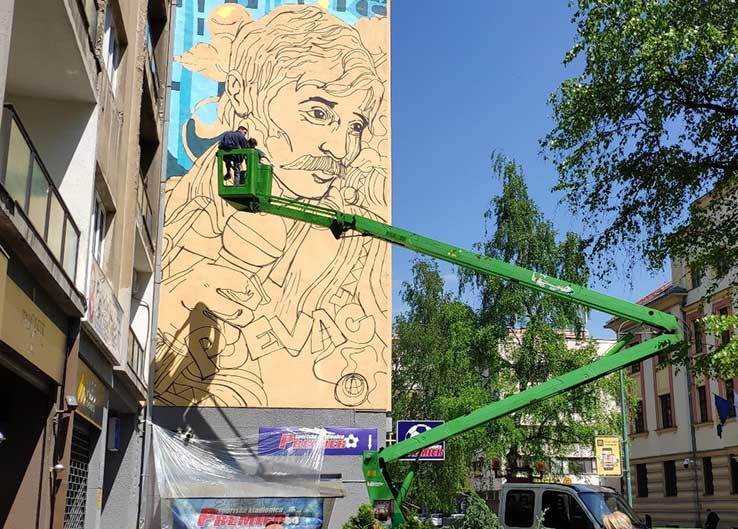 Source: Mladen Obrenović
Source: Mladen Obrenović
Those mentioned, which in fact are only a small number of selected examples, actually indicate a better, more imaginative, nobler, wiser way to choose a motif, moment or person to depict on a mural and thus send a message to passers-by. The selection alone clearly speaks about someone's memory, identity, tradition, history and it passes on a message from the past to the present, but also to the future. Indeed, as a lasting or relatively lasting testimony, it can say a lot about the current moment of a particular society, but also the values that community members advocated at the time and the views they promoted.
Apart from being a powerful means of communication, they can also be the subject of manipulation, even propaganda, raising tensions and deepening misunderstandings, which is very noticeable in the case of Bosnia and Herzegovina. Since monuments and memorials in Bosnia and Herzegovina, and there is but a mere handful of them dedicated to all victims regardless of nationality and/or religion, mark the territory and represent three viewpoints of the recent past, three histories and three ways of remembering - Bosniak, Croat and Serb – murals should at least stand for something else.
Please refer to the Terms before commenting and republishing the content.
Note: The views and opinions expressed in this article are those of the author and do not necessarily reflect the views of the Institute of Communication Studies or the donor.


